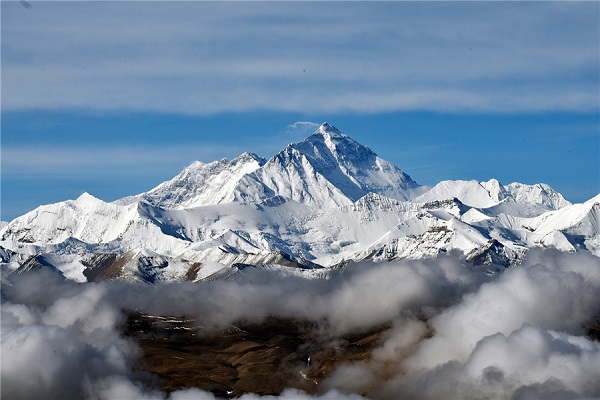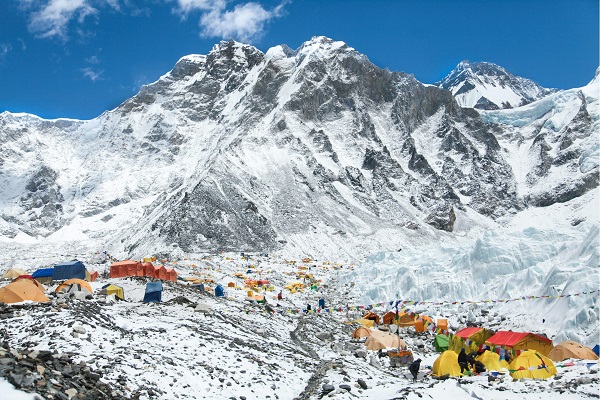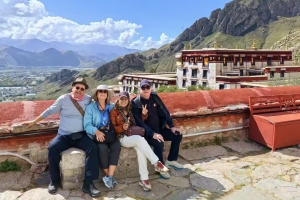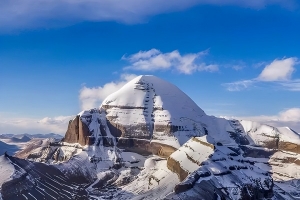Mount Everest, known locally as Qomolangma, is a destination that captures the imagination of adventurers worldwide. Standing as the world’s tallest peak, it offers not just breathtaking views but also an extreme environment where understanding the climate is crucial for a safe and enjoyable journey. This guide provides insights into the weather, climate, and essentials for foreign tourists, ensuring they are prepared for the challenges and beauty of this iconic destination.
Located at an altitude of 5,364 meters (17,598 feet) on the southern side in Nepal and 5,200 meters (17,060 feet) on the northern side in Tibet, EBC experiences a wide range of temperatures. The base camp offers trekkers an opportunity to immerse themselves in the Himalayas without the need for technical climbing skills. However, its high-altitude climate is harsh, with temperatures dropping drastically at night and during the winter season.

Seasonal Temperatures at EBC and Qomolangma
Spring is the most popular season for trekking, with daytime temperatures ranging from 8°C to 12°C (46°F to 54°F). Nights, however, can be chilly, dropping to -10°C to -15°C (14°F to 5°F). The trails come alive with vibrant rhododendrons, and the skies are generally clear, offering unobstructed views of Everest and its neighboring peaks. During the summer monsoon season (June-August), daytime temperatures can reach up to 15°C (59°F), but heavy rainfall makes the trails muddy and cloud cover often obscures the mountain views. Autumn, from September to November, offers the clearest and most stable weather conditions, with daytime temperatures between 10°C to 15°C (50°F to 59°F), while nights drop to -10°C to -15°C (14°F to 5°F). Winter treks are ideal for solitude seekers but demand more preparation, as daytime temperatures hover between -5°C and 4°C (23°F to 39°F) and nights can plunge to -20°C (-4°F).
The Tibetan side of EBC is colder and drier due to its higher altitude and location on the arid Tibetan Plateau. Daytime temperatures are often several degrees lower than on the southern side, and nights can dip below -25°C (-13°F) in winter. Additionally, stronger winds are common, making this side less hospitable but equally majestic.

The summit of Mount Qomolangma, at 8,849 meters (29,032 feet), represents one of the harshest environments on Earth. Even during summer, temperatures rarely exceed -20°C (-4°F). In winter, they plummet to an unimaginable -60°C (-76°F). The wind chill is another significant factor, with hurricane-force winds often exceeding 160 km/h (100 mph). These conditions make survival at the summit possible only with specialized equipment and meticulous planning.
Key Differences Between EBC and the Summit
While EBC offers relatively tolerable conditions with proper support, the summit is a realm of extreme cold where exposure without the right equipment is life-threatening. Trekkers of varying experience levels can comfortably reach EBC, but summiting Qomolangma requires advanced mountaineering skills, physical endurance, and acclimatization to extreme altitudes. Additionally, at EBC, trekkers can seek shelter in lodges or tents, whereas summit climbers face prolonged exposure to unforgiving conditions, requiring high-stakes decision-making.

Clothing and Essentials for EBC
Dressing in layers is essential to manage the wide temperature fluctuations during the trek. Start with moisture-wicking base layers to keep dry, followed by lightweight insulating layers such as fleece jackets for warmth. Top it off with waterproof and windproof outerwear to protect against sudden rain or snow. For headwear, bring a woolen hat for warmth, sunglasses with UV protection, and a balaclava for colder nights. Insulated gloves and thermal socks ensure your extremities stay warm, while sturdy trekking boots provide comfort and safety on uneven terrain.
Aside from clothing, carry high-SPF sunscreen, lip balm, and a wide-brimmed hat to protect against the intense UV rays at high altitudes. A basic first aid kit, including altitude sickness medication and blister care supplies, is indispensable. High-calorie snacks like protein bars and dried fruits can help maintain energy levels during long trekking days. Lastly, consider portable power banks for your devices as cold temperatures drain batteries quickly.

Additional Tips for Trekkers
- Acclimatization Is Key: Spending extra days at intermediate altitudes allows your body to adapt to reduced oxygen levels and minimizes the risk of altitude sickness.
- Stay Updated on Weather Conditions: The Himalayan weather is notoriously unpredictable. Monitor forecasts and be prepared for sudden changes.
- Practice Responsible Tourism: Respect local customs and follow Leave No Trace principles to protect the fragile ecosystem and support sustainable tourism.











